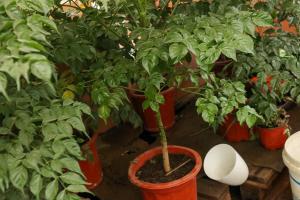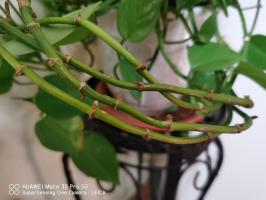What's Eating My Young Tomato Plants?
Tomato plants are popular among home gardeners due to their delicious fruits that can be harvested right in your backyard. However, it is not uncommon for gardeners to encounter challenges such as pests that damage and eat their tomato plants. If you have noticed small holes in the leaves or parts of your young tomato plants being chewed, then it's time to start investigating what's eating them.
Identifying the Culprit
The first step in addressing the problem is to identify the pest that is eating your young tomato plants. Some of the common culprits include:
Hornworms: These are large caterpillars that feed on tomato plants at night, leaving large holes in the leaves and sometimes eating the stems and fruit. Hornworms can be identified by their size, green color, and distinctive horn-like protrusion at one end.
Flea beetles: These tiny, jumping insects are usually black or brown and can cause small holes in the leaves or chew the entire plant. Flea beetles are most active in the spring and can be seen jumping when disturbed.
Cutworms: These caterpillars are most active at night and can cause young tomato plants to wilt and fall over at the base. Cutworms can be identified by their gray-brown color and curling into a C-shape when disturbed.
Slugs and snails: These slimy creatures feed on a variety of plants, including young tomato plants. They leave irregular holes in the leaves and can be identified by their slimy trails they leave behind.
Control Measures
Once you have identified the pest that is eating your young tomato plants, there are several measures you can take to control the problem:
Handpicking: If you only have a few pests on your plants, handpicking them off by hand can be an effective measure. Wear gloves and check your plants regularly to remove any pests you see.
Barriers: Creating a physical barrier around your plants can prevent some pests from accessing them. For example, you can use row covers or netting to prevent hornworms and flea beetles from getting to the plants.
Baits and traps: Using baits or traps can also help control some pests. For example, placing a bowl of beer near your plants can attract slugs and snails, which will drown in the liquid.
Natural enemies: Some pests have natural enemies that can help control them. For example, introducing ladybugs or lacewings to your garden can help control aphids, which are a common pest that eats tomato plants.
Chemical control: If the infestation is severe, chemical control may be necessary. However, it is important to use pesticides safely and follow the label instructions carefully.
Preventative Measures
Preventing pests from eating your young tomato plants in the first place is always easier than controlling an infestation. Here are some preventative measures you can take:
Planting location: Choose a spot for your tomato plants that gets plenty of sun but is also protected from strong winds.
Clean gardening: Clean up any garden debris and weeds regularly, which can harbor pests and diseases.
Companion planting: Planting companion plants, such as marigolds or basil, can help repel some pests.
Rotate crops: Avoid planting tomatoes in the same spot year after year, which can attract pests and diseases.
Healthy soil: Maintain healthy soil by adding compost and organic matter, which can help grow strong and healthy plants that are more resistant to pests.
Conclusion
Tomato plants can be a rewarding addition to your garden, but it's important to be aware of pests that can eat them. By taking preventative measures and knowing how to control pests when they do appear, you can enjoy a bountiful harvest of delicious tomatoes.

 how many times do yo...
how many times do yo... how many planted tre...
how many planted tre... how many pine trees ...
how many pine trees ... how many pecan trees...
how many pecan trees... how many plants comp...
how many plants comp... how many plants can ...
how many plants can ... how many plants and ...
how many plants and ... how many pepper plan...
how many pepper plan...































